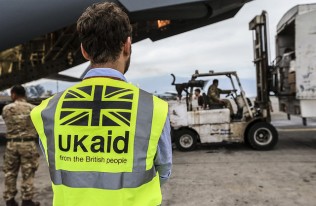
On April 25, 2015, Nepal experienced the first of several devastating earthquakes and aftershocks, the strongest of which rated a 7.8 on the Richter scale. While the initial search and rescue efforts have ended, Nepal is still in the midst of recovering from these deadly earthquakes.
Damage assessments estimate that recovery in Nepal will cost US $6.6 billion. That’s a third of Nepal’s economy, so there is a long road ahead. However, there are ways we can help with the recovery effort.
One of the biggest ways is to continue tourism to Nepal. In 2014, travel and tourism accounted for 8.9% of Nepal’s GDP and supported 1.1 million jobs in the country. If tourism ceased in the region, it would hamper earthquake recovery efforts and harm the country’s economy as a whole.
Donating money to reputable charities with a presence in Nepal is the second and most obvious way to help. Donations are especially important now, as there are reports that aid funds are drying up.
With previous recovery efforts in other countries, governments and non-profit organizations have donated supplies to disaster victims, without asking them first what they actually needed. This approach has been inefficient and plagued with issues like misplaced spending and problems with relief delivery.
In Nepal, we have already seen some of this, with people receiving items that they don’t want or need. According to one report, Nepal received immediate food donations of tuna and mayonnaise, when they really needed grain, salt, and sugar to cook meals.
Giving the aid recipients cash could be the most effective way to help. After all, they’re in the best position to know what they need to rebuild their lives. Not only that, cash-only donation programs can be more cost-effective, placing more aid money into the hands of disaster victims.
Evidence also shows that cash-only donations have worked well in other countries. Early reports out of Nepal suggest that cash donations have had a positive impact.
So, how has Nepal been using the donations it’s received so far? To date, there has been controversy surrounding the government’s handling of aid money and recovery efforts.
The effort to distribute aid to citizens was slow to start, hampered by red tape. There were reports of supplies piling up at airports because the government utilized its standard customs procedures, rather than setting up a temporary and more expedited process.
There was also criticism after the government announced shortly after the quake that it would transfer all relief funds deposited into bank accounts into the Prime Minister’s Relief Fund. This raised concerns about fund misuse and made some reluctant to donate.
However, there have been positive steps made towards recovery, with Nepal hosting the International Conference on Nepal’s Reconstruction 2015 this past June 25. The conference served two purposes: (1) to provide an update on earthquake damage and recovery efforts and (2) to elicit support from the nations and organizations attending the conference.
Regardless of the controversy and concerns, it’s still possible to help the people of Nepal rebuild their lives through tourism dollars and cash donations to reputable organizations on the ground in Nepal. If you are interested in donating, PRI has created a list of the top 7 vetted non-profit charities that are doing work in Nepal.
Read Ethical Traveler's Reprint Policy.
